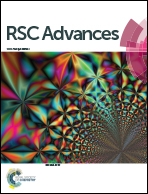Improvement of n-type conductivity in hexagonal boron nitride monolayers by doping, strain and adsorption
Abstract
The n-type conductivity of hexagonal boron nitride (h-BN) monolayers has been studied using state-of-the-art first-principles calculations. We adopt three different methods, which are C, S, Si and Si–nO (n = 1, 2, 3) doping, applying strain and alkali metal (AM) atom (Li, Na, K and Rb) adsorption, to improve the n-type conductivity of h-BN monolayers. Three important results are obtained. First, as donor dopants, the activation energies (ED) of CB, SN and SiB are 1.22, 0.50 and 0.86 eV, respectively. The ED of Si can be further reduced via Si–nO codoping with an increasing O-atom number and it decreases to 0.39 eV for Si–3O. Second, ED can be effectively reduced by applying strain. The Si–3O has the lowest activation energy of 0.06 eV under 4% compressive biaxial strain. Finally, there is an obvious charge transfer from adsorbed AM atoms to h-BN monolayers, which results in an enhancement of electron concentration and improvement of n-type conductivity. This charge transfer is insensitive to the strain. The present results are significant for improving the performance of h-BN based two-dimensional optoelectronic nanodevices.


 Please wait while we load your content...
Please wait while we load your content...